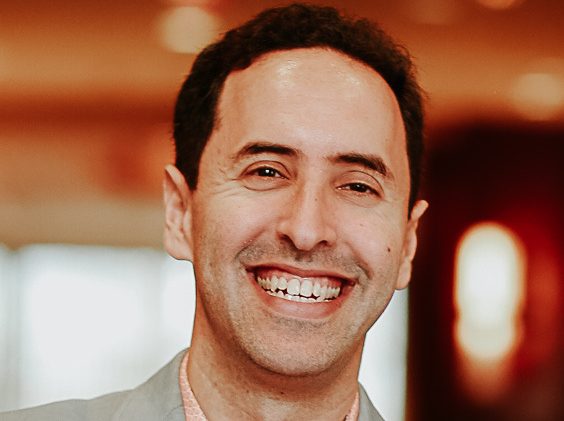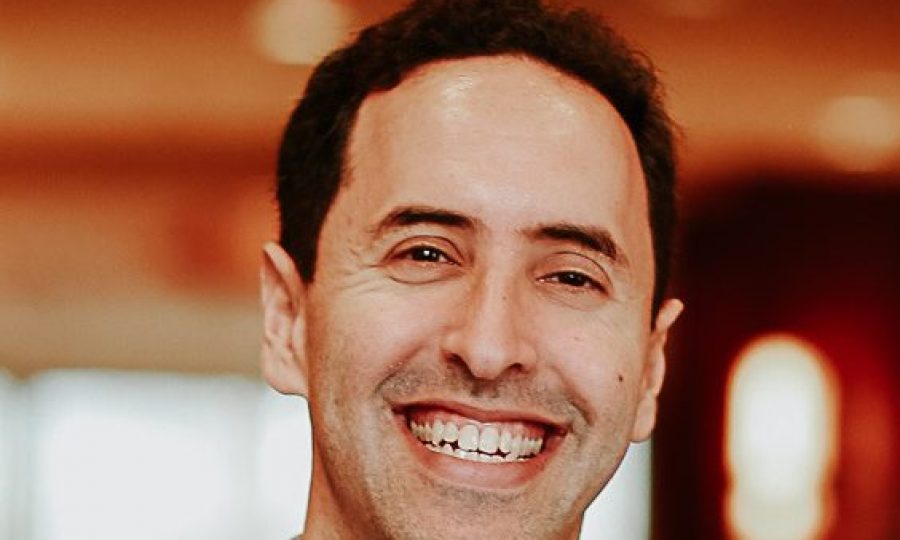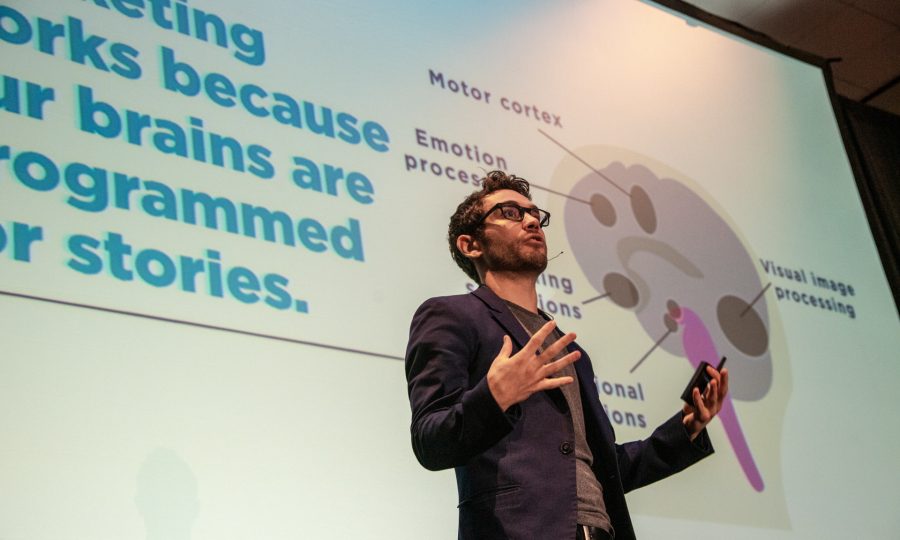David Berkowitz has extensive experience on both the brand and the sell side, having worked at organizations such as eMarketer, 360i, Sysomos and Story Hunter. Today, David’s consulting through his Serial Marketer practice, helping agencies, media companies, and tech startups on everything from marketing, business development, corporate strategy, to innovation.
David Berkowitz has written over 500 articles, spoken at more than 300 events, developed marketing strategies for Fortune 500 brands, and guest-lectured at universities like Yale, Rutgers, and MIT.
In this interview, we cover:
- How brands and publishers get the best work out of their partnerships.
- How senior marketers can give their teams autonomy.
- David’s favorite marketing campaign.
- How smart people have made David a better marketer.
- Shortcuts/tips on making the branded content process more efficient.
- How to improve ROI on any campaign.
- Further thoughts on ROI.
- Emerging trends shaping the market.
- The one thing David wishes clients would do more of.
GS: As someone with both buy- and sell-side experience, how can brands and publishers get the best work out of their partnerships?
David: Empathy goes a long way. The pressure, of course, is on the sell-side to craft something of value and deliver on those expectations. As a seller, make it clear that you want to be the best possible partner for the buyer and work with them for the long haul. Try to accommodate their needs. Buyers can get away with a lot of bad behavior, but buyers must realize they can’t get something for nothing and that they can’t expect 24/7 service when paying some nominal rate that barely keeps the servers running. Buyers that really want to partner become the kind of clients that a seller will pick up the phone at 3am for – if it ever comes to that.
GS: How can senior marketers give their teams autonomy, to create the best work but that creates the results they’re after?
David: One of my favorite columns I ever wrote is for MediaPost back in 2012, “Your Brand is Batman.” The short version is that pretty much everyone in America (and practically anywhere that watches American movies or reads our comics) knows who Batman is and what his overarching story is – the rich, orphaned, gadget-loving vigilante seeking justice in a city teeming with crazy villains. But from there, the story has taken on countless forms over most of the past century, and you could tell new Batman stories for a thousand years that remain ‘on brand.’
The trick is getting the brand guidelines set so that everyone really knows what the brand is about. With those guidelines as your anchor, go forth and constantly explore new directions.
GS: Out of all the brand campaigns you’ve been involved in, what’s been your favorite and why?
David: I’m partial to challenges that involve brands that aren’t known as early adopters and figuring out how they can work with new communication channels. Years ago, for instance, I was at 360i when we worked with H&R Block to launch one of the first branded accounts on Twitter. The marketing team at H&R Block was one of the best, most forward-thinking I’ve worked with, and they infused the account with a degree of personality and passion that you never would have expected. In the process, they earned raves from the media as an example of how marketers should use social media. Success stories like that helped the agency and clients build on that, leading to work like the renowned work 360i did with Oreo and others.
GS: Is there a specific data point, or learning you’ve gotten from your data, that has improved the work? i.e. how did you get smarter?
David: I’ve gotten smarter by working with some of the smartest people. That has included working with analysts and strategists that could tell stories based on data.
Dealing with people who can turn data into trends and trends into insights is far more important than having good data itself. Data can be commoditized; insights can’t.
GS: Are there any shortcuts or tips you’ve found to make the process of creating branded content campaign more efficient?
David: There are few shortcuts. Depending on what you’re trying to create, there are ways to work with others on rapidly iterating content, or scaling video production, or adapting content to different channels. But few rules or approaches are universal.
GS: What one thing would you recommend doing, to improve the ROI of any campaign?
David: Be clear up front what your goals are, especially with any partners, and have a candid discussion about how you will or won’t measure your progress toward those goals.
GS: You do a weekly newsletter, do you have any thoughts on ROI that you could share?
David: I started blogging on my own in 2005. I never ran ads on my blog, but my blog helped me land jobs such as the 360i role, which lasted more than seven years. The newsletter has been different, as I actually did have a sponsor for much of last year, and I’ve been talking to a few others about such arrangements. Yet I shifted to a weekly format for the newsletter before I thought of attracting sponsors.
The main value I get from it is the return on interest, not return on investment. Getting in front of people who want to read my work each week leads to many conversations I wouldn’t have otherwise.
And I keep the newsletter feeling like a fireside chat, so it’s more personal. I also have no doubt that it will also lead to even more tangible value as well. I have a similar approach with the Slack-based community I started, Serial Marketers. I’m not monetizing that at all, but I’m constantly in touch with members. Many of them have wound up collaborating on paid projects; I get those kinds of updates on a fairly regular basis now. I also know of one person in particular who landed a job directly through my newsletter. I’m not doing this entirely out of altruism, but when I hear stories like that, it motivates me to keep finding new ways to provide value for my audience and members.
GS: What emerging trends are shaping the market?
David: “Emerging” is in the eye of the beholder. Influencer marketing has been around for ages, well before the internet, but it is experiencing a renaissance in both positive and negative ways right now, presenting a lot of opportunity but also surfacing too many bad actors. Applications of blockchain for marketing are multiplying but proving slower to gain traction now that some of the hype has faded.
Perhaps the biggest trend that matters in the advertising world is the erosion of trust that both consumers and marketers have with major platforms, especially Facebook. Two companies – three if you want to add Amazon – control the vast majority of online ad dollars, but advertisers are hungry for others scalable options. If advertisers can’t trust the results of campaigns and fear that their ads will be wrapped around mass shootings and other heinous content, then the whole ad industry could look very different within a couple of years.
The fact that a credible presidential candidate (Elizabeth Warren) can include breaking up big tech as part of her platform indicates that things will get messier before they stabilize.
GS: As a marketing consultant you get to work across a lot of different markets/industries; overall, what’s the one thing you wish clients would do more of?
David: Typically, the clients I work with are already doing a lot of things right, and that’s why I want to work with them, so I won’t necessarily speak to just my clients. But I’ll say in general, the thing clients can do more of is respect the creators. Yes, the clients must be firm and clear with their brand guidelines, but then they should let the creators create. That can mean a media company’s brand studio, or an influencer with 5,000 or 5 million followers, or a consultant brought on board. Trust those that know their audiences and craft, and then see what kind of magic can happen.

|
|---|


